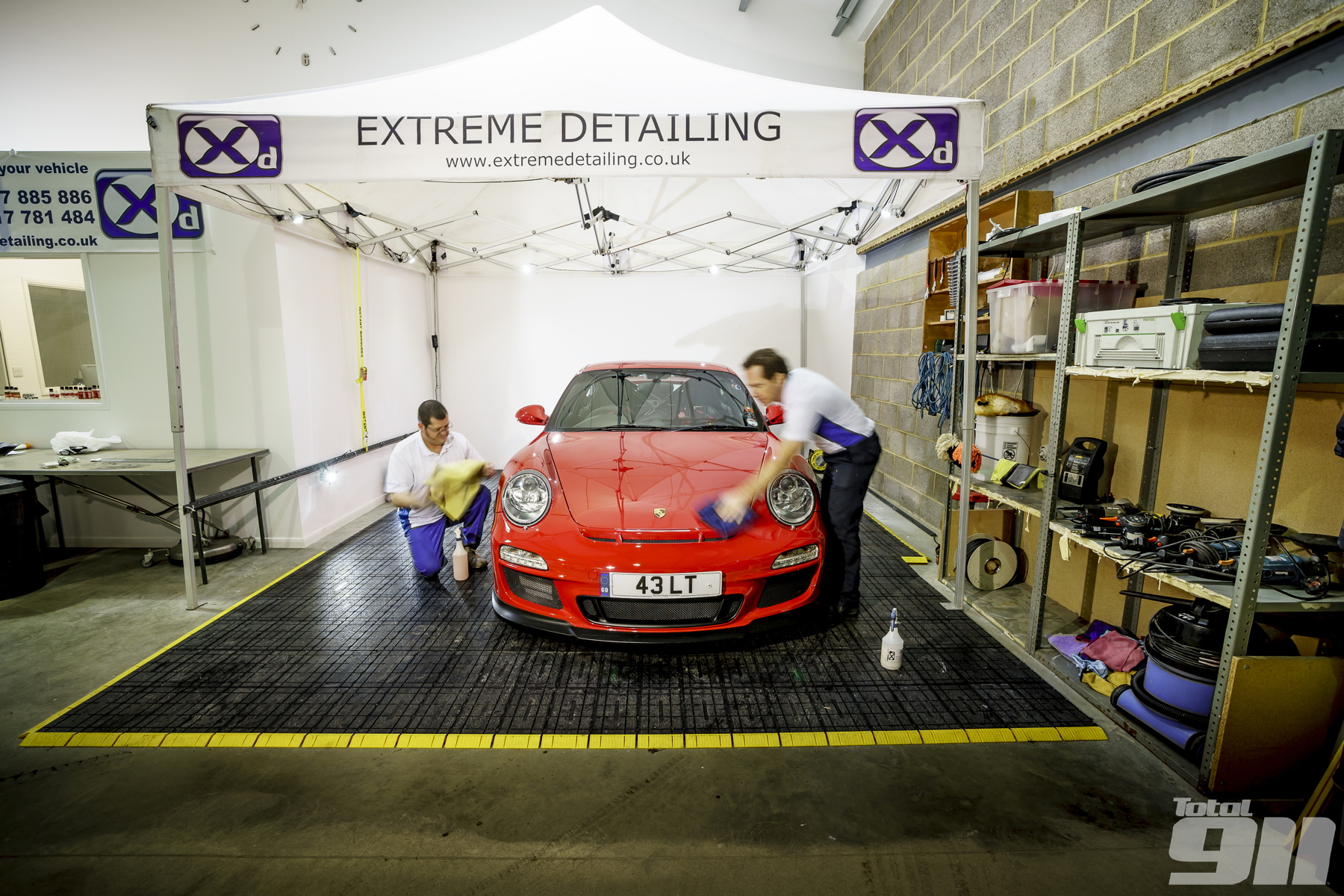Selling your Porsche 911 part two
The whole process starts on the phone, with most of RPM’s enquiries coming through their existing base of service and sales customers, as well as referrals based on the excellent service experienced by others.
The first ‘qualification conversation’ is crucial, according to Daily, as it sets out exactly what the seller is hoping to achieve and, “if done right, saves a lot of faff for both parties in the long term.”
It gives Daily a chance to see if sale or return is the correct path to take. For example, a cherished classic is ideal for sale or return, while a depreciating 997 Carrera Gen2 is more suited to a quicker sales process. Once out of the way, RPM encourage the owner to take their car into the showroom to get a feel for the staff and the environment.
After that, it is time for the PPI inspection (a process that is outlined on the phone). As soon as the car arrives at the showroom, Daily plugs a diagnostic computer in to check for over-revs recorded on the engine’s management system.
While a 996 has just two over-rev categories, 997s have six categories, with RPM accepting cars that have any ‘1’, ‘2’, or ‘3’ category over-revs recorded. Anything higher is mechanical and may have suffered internal damage. It also wouldn’t be covered by a Porsche warranty.
On classic 911s, a leak test is performed (at RPM’s own cost) with losses of up to ten per cent accepted. If the figures are “anywhere from 25 to 30 per cent upwards, a rebuild is recommended.”
Similarly, on 996s onwards (bar Mezger-engined cars) a boroscope inspection is carried out to check for bore-scoring or IMS failure. This is just a simple case of taking a spark plug and performing the inspection.
If the engine’s ECU readings are favourable, Daily will also perform a quick paint depth check to ascertain if the car has had any panel repair. While an untouched car is preferred, resprays are accepted “as long as there is a paper trail and a genuine reason for having the work done. What you want is a photo before, during, and after,” Daily explains.
Assuming the ECU and paint checks are passed (as well as a quick road test) Daily then agrees values with the owner, as well as talking through RPM’s fees and their likely net return. “At that point I’m quite blunt about the fact that the car will be PPId,” he says.
This is the stage where the car goes into RPM’s fully kitted-out workshop, where their trained technicians perform a 110-point check of the entire car. Once this has been done, the seller is provided with a list of items filtered into three categories: features that need to be fixed to make the car safe for sale, advisory items that would benefit the sale, and minors that aren’t detrimental (such as a stone chip on the front bonnet).
“Once the PPI is done, I will talk them [the customer] through those [points] and explain to them the bits that we suggest need to be done,” explains Daily. “If they don’t agree with that or refuse to do it, we can’t take it any further and they’ll just have to pay for the PPI, and that’s that.”
If you choose to proceed, once the required work has been carried out the car is then transferred to an adjoining bay for a geometry check before heading next door to Extreme Detailing to be readied for photography and the showroom.
Like any of the work required after the PPI, the detailing is one of the costs recovered by RPM in the sale price and, although some owners may be offended when told their car needs a professional detail, transparency is key according to Daily.
“I’ve had cars come in here that are astonishing, but the majority need a detail. On the phone it can offend some people, but when they get here I explain what I mean by ‘it needs a detail’.”
After photographing and listing the car, it is then a case of finding the right buyer. Usually, RPM will only accept the asking price but, “if the offer is a little bit off and it’s sensible,” Daily will “put that offer to the owner to see if a deal can be agreed.”
RPM aim for a four-week turnaround from getting the car in for its inspection to passing the car onto its new owner. It’s an aggressive time scale, but Daily is proud of the company’s success rate, with around 90 to 95 per cent of sale or return cars sold.
It can, of course, take longer than the four-week target depending on the market and the type of 911 on offer, though, hence why Daily suggests the process suits appreciating rather than depreciating Porsches.
Whether its to fund a newer model or it’s the painful end of a wonderful 911 relationship, if you have a desirable 911, sale or return might just be the unknown sales method you’ve been looking for to maximise your return.




Comments (0)